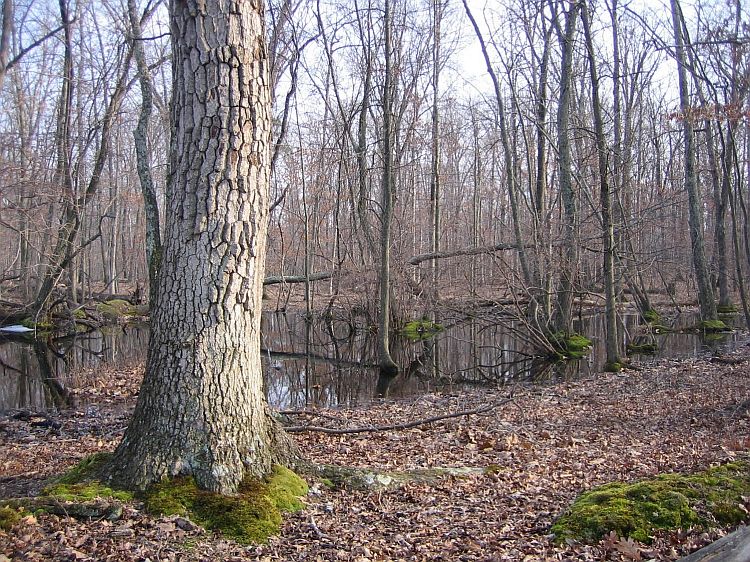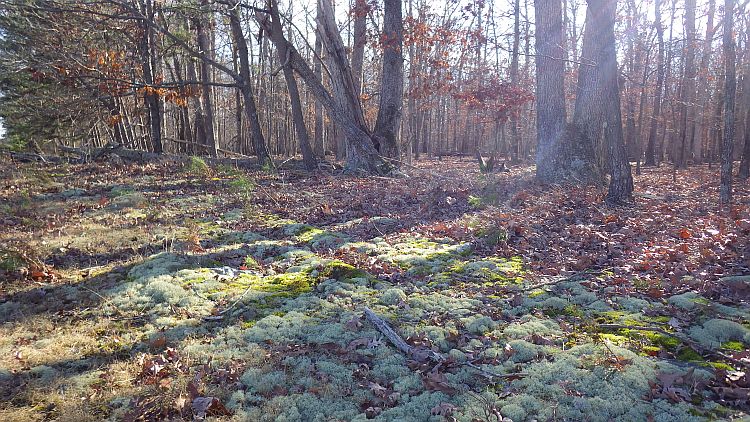2022 Winter Solstice Field Trip & Hooley at Travilah Serpentine Barrens
Date/Time
Sunday, December 18, 2022
10:00 am - 2:00 pm
Location
Travilah Serpentine Barrens Field Trip Parking
Categories
Leaders: Rod Simmons and John Parrish
Sponsors: Maryland Native Plant Society, Potowmack Chapter of the Virginia Native Plant Society, and Botanical Society of Washington.
Celebrate the beginning of the winter season at the old-age Travilah Serpentine Barrens (Serpentine Barrens Conservation Park-North Unit) with its spectacular scenery and diversity of native plants, wildlife, and natural communities!
The Travilah Serpentine Barrens (Serpentine Barrens Conservation Park ) is the mid-Atlantic region’s stellar example of a globally-rare forested serpentinite community. This vegetation type once comprised many thousands of acres in the area of Montgomery County west of Potomac and Rockville, with less than 1,000 acres of this unusual local landscape preserved today. Serpentinite is an ultramafic rock derived from magnesium-rich silicate materials that typically weathers to a soil that is high in magnesium and iron. The Travilah serpentinite is dark grayish green and closely underlies the surface, frequently outcropping throughout.
Soils of this type are fairly nutrient deficient and produce a somewhat stunted vegetation mainly characterized by oaks, hickories, pines, and grasses, though plants of the Rosaceae, Cyperaceae, and Lamiaceae, among others, are also prominent. A major difference between floras of calcareous soils and magnesium and calcium-rich soils of diabase and ultrabasic sites vs. serpentinite soils (which are very high in magnesium but generally very low in calcium levels) is that the diversity of plant species and herbs in particular is generally much higher on calcium-rich soils than on magnesium-rich, calcium-poor soils like serpentinite. Thus, serpentinite sites often appear as grassy “barrens”, savannahs, and glades.
Geologist Tony Fleming, who has studied the Travilah site, further adds, “one thing that I think hasn’t been adequately explored is the calcium-magnesium ratio. The ideal ratio for most plants is around 8:1. It wouldn’t surprise me if there’s some tipping point, maybe 2:1 or thereabouts, below which things start to get weird. Aside from competing for the same valence sites as calcium, magnesium also complexes readily with other minor nutrients, notably sulfur and phosphate; ergo, when magnesium saturation reaches a certain point, some of these other things cease to become available to plants. Most or all serpentine bodies are way below that level. It is amazing how the ideas about serpentine geo-ecology have evolved. The conventional wisdom used to be that ‘high’ levels of chromium, cobalt, nickel, etc., made these sites toxic, but that doesn’t seem to have anything to do with it, since many serpentine bodies have low levels of these metals yet still have the distinctive vegetation.”

Old-age Black Gum (Nyssa sylvatica) at edge of globally-rare Upland Depression Swamp. Photo by R.H. Simmons.
Much of the forest at the Travilah site is old-growth, despite the relatively short height of the canopy trees. The canopy is predominately White, Northern Red, and Post oaks; Sweet Pignut, Mockernut, and Pignut hickories; and Shortleaf and Virginia pines. Prominent understory plants are Eastern Red Cedar, Blackjack Oak, Sweet Crabapple (Malus coronaria), a variety of hawthorns (Crataegus spp.), Black Haw, Redbud, Dogwood, Fringetree, and others. Some sections of the forest floor are densely vegetated with colonies of ericaceous plants of the Heath Family, such as Deerberry, Lowbush Blueberry, and Black Huckleberry. Others are extensive glades of graminoids (grasses and grasslike plants) and wildflowers, many of which are regionally rare.
Old place names nearby also denote the extent of the once-vast serpentine barrens that occurred at Travilah, such as Big Pines, Quince Orchard (generic name for Rosaceae woody plants common to serpentinite communities like Sweet Crabapple and Hawthorn), and Greenbrier Creek.
We’ll also see many native grasses and plants typical of meadows and prairies and a rare Upland Depression Swamp.
Maryland Native Plant Society Travilah Facebook Post (2016)
VNPS Travilah Field Trip Report (2015)
Washington Post: Travilah’s Treasures (1999)
Field trip is free and open to non-members. Registration is not required.
For ARMN members, this event should apply towards advanced training hours in botany, dendrology, forest ecology, and geology.
Bring: Wear sturdy shoes and bring lunch or snacks and water. Most of the walk traverses flat, fairly open woodland, open glades, and grassy areas over gently rolling uplands, though some routes may be moderately rocky.
Directions:
Exit from the Capital Beltway (495) onto River Road heading west towards the village of Potomac (junction of Falls Road and River Road). Continue on River Road westward past this intersection app. 1.7 miles to Piney Meetinghouse Road. Turn right onto Piney Meetinghouse Road and proceed gradually uphill for app. 2 miles. Turn left onto Palatine Drive and proceed about 1 mile to the intersection with Greenbriar Road. Take a right onto Greenbriar Road and proceed app. 1/2 mile to Centurion Way. Take a right onto Centurion Way and proceed app. 1/3 mile – and when you start seeing the high-wire power lines, please begin parking along the right side of street first, as space allows. Centurion Way is only about 1/2 mile long and ends as a cul-de-sac, so we’ll have to park along both sides of the street. This is a residential neighborhood, so please make sure not to block driveways or street access and to take care not to leave ruts or tire tracks in grass along the road shoulder. When the right side fills up, please circle around and park on left side of the road. After parking, walk to the edge of the power line where we’ll meet.
*As you’re heading uphill on Piney Meetinghouse Road, look for signs of how the landscape (geology, soils, and vegetation) changes as the road nears the high ridge of the serpentine barrens. The Mesic Mixed Hardwood Forest below gradually changes to a much more open woodland of oaks and pines – hence the name Piney Meetinghouse! – and abundant outcrops of serpentinite. As you head closer to the meeting location – through a broad expanse of scalped forest, McMansions, and plantings of invasive ornamental grasses and fruit trees – take note of the relative abundance of Shortleaf Pine (Pinus echinata), probably the region’s single largest occurrence.
*In the event of heavy-steady snow, sleet, pouring rain, or icy, dangerous conditions of roads, the field trip will be cancelled.


